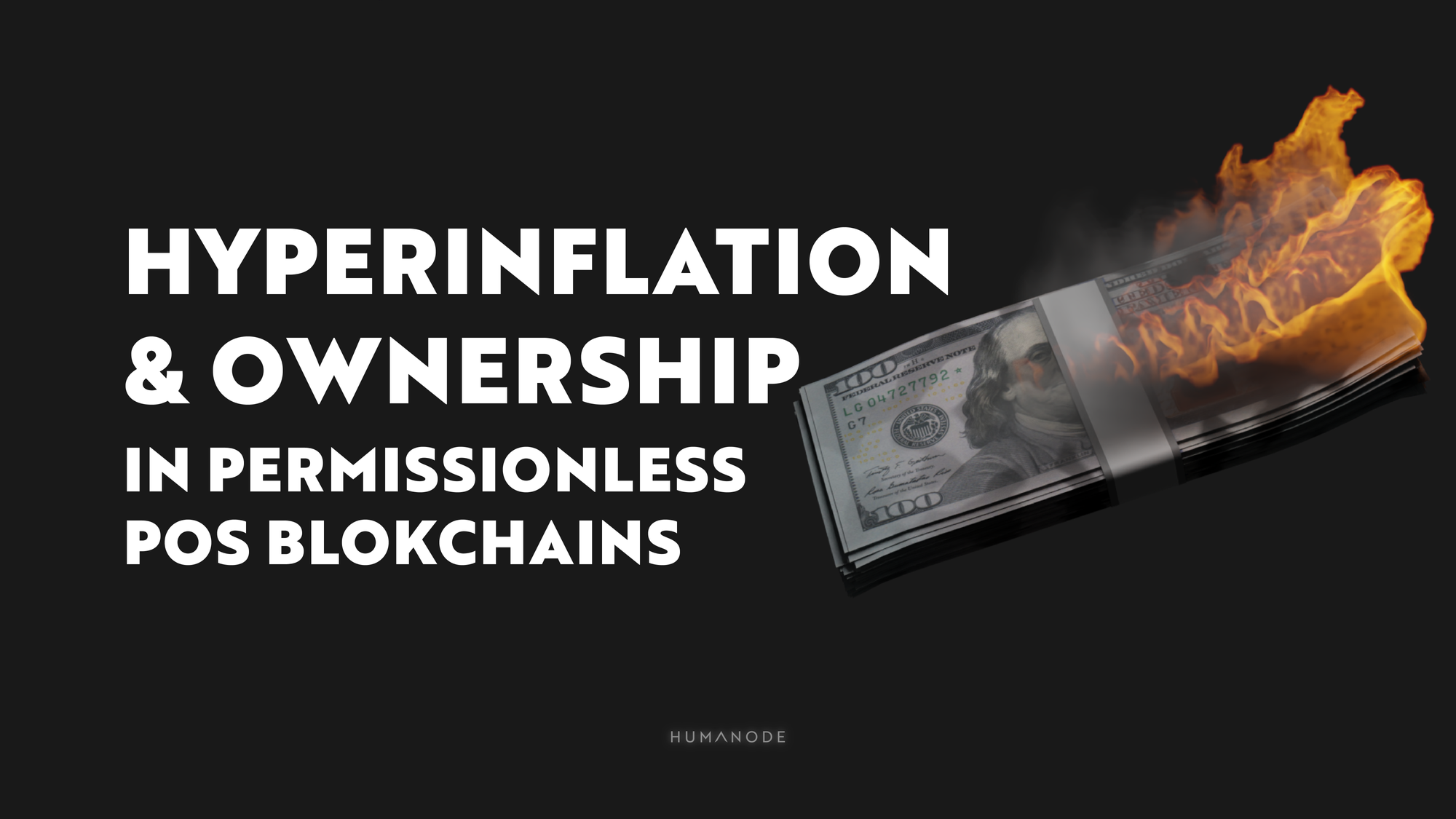The effects of hyperinflation on ownership in permissionless Proof of Stake blockchains

Do you know what a black swan event is? In the financial world, a black swan is known as an unpredictable event that is beyond what is normally expected of a situation and has potentially severe negative consequences.
In fact, many “possible black swan events” are so far-fetched, that from a probabilistic standpoint, the chance of you slipping and dying in the shower, is so much more realistic. The following is just one of those “possible black swans”.
National currencies within a traditional financial system often enter periods of high inflation. They always do. Currency straightening can continue for some time but in the end, the economy needs new liquidity to breathe, no matter what. Usually, hyperinflation follows. The process of the weakening of any substantial national currency is not fast. It is rather gradual but it will gain speed and weaken at an increased pace.
The real transition of capital happens in the early stages of a high inflation period, or even before that, and the ones most affected by the end of the hyperinflation are the wider population, in other words, the common folk, like you and me.
When a national reserve or a large asset manager chooses to increase the stake in an alternative financial system, he may choose to invest heavily in a Proof Stake network. You, my degen reader, are probably looking forward to this happening with excitement. It can as well make blood run out of your eyes.

The security of the Proof of Stake public blockchain depends on capital. A single authority has no control over the ownership of the network unless it has enough stake to outvote the rest. Sometimes less than 51% is enough since other validators may take the controller's side.
The latest versions of public blockchains have finalization, still, the one controlling the largest stake can change the order of transactions. At least an attacker cannot change the history of the blockchain. However, governance becomes a more important target. The more the capitalization of a public PoS blockchain, the more capital the "purchaser" needs for major ownership in the network. Over the last 5 years, the capitalizations ranged from 50 million to 300 billion for an operating Proof of Stake blockchain.
One thing to keep in mind, is to never underestimate the level of possible liquidity generation by the traditional financial systems. Most of the world currency supply is generated by commercial banks. They are able to multiply it fast given new liquidity injections from central banks. In turn, this also allows them to gradually buy out a Proof of Stake system over a period of time, putting it under the control of the same old traditional financial structure.
What if a purchase of a major stake in a PoS blockchain happens amid a rapid increase in the national currency supply?
Due to this attack, many tradfi institutions want to build Proof of Authority blockchains. They become permissioned - with full control by registered people with private keys.
In the end, no matter how decentralized we want to be, no matter how we want to revolutionize the financial systems and take the power out of the hands of the established “old money”, one event can turn it around.
And this is also one of the reasons we build permissionless blockchains based on human recognition instead of capital recognition. Each person can have an equal share of a blockchain, fully decentralizing the ownership. The amount of money one has does not dictate how the system runs. We are trying to give power to the people.

